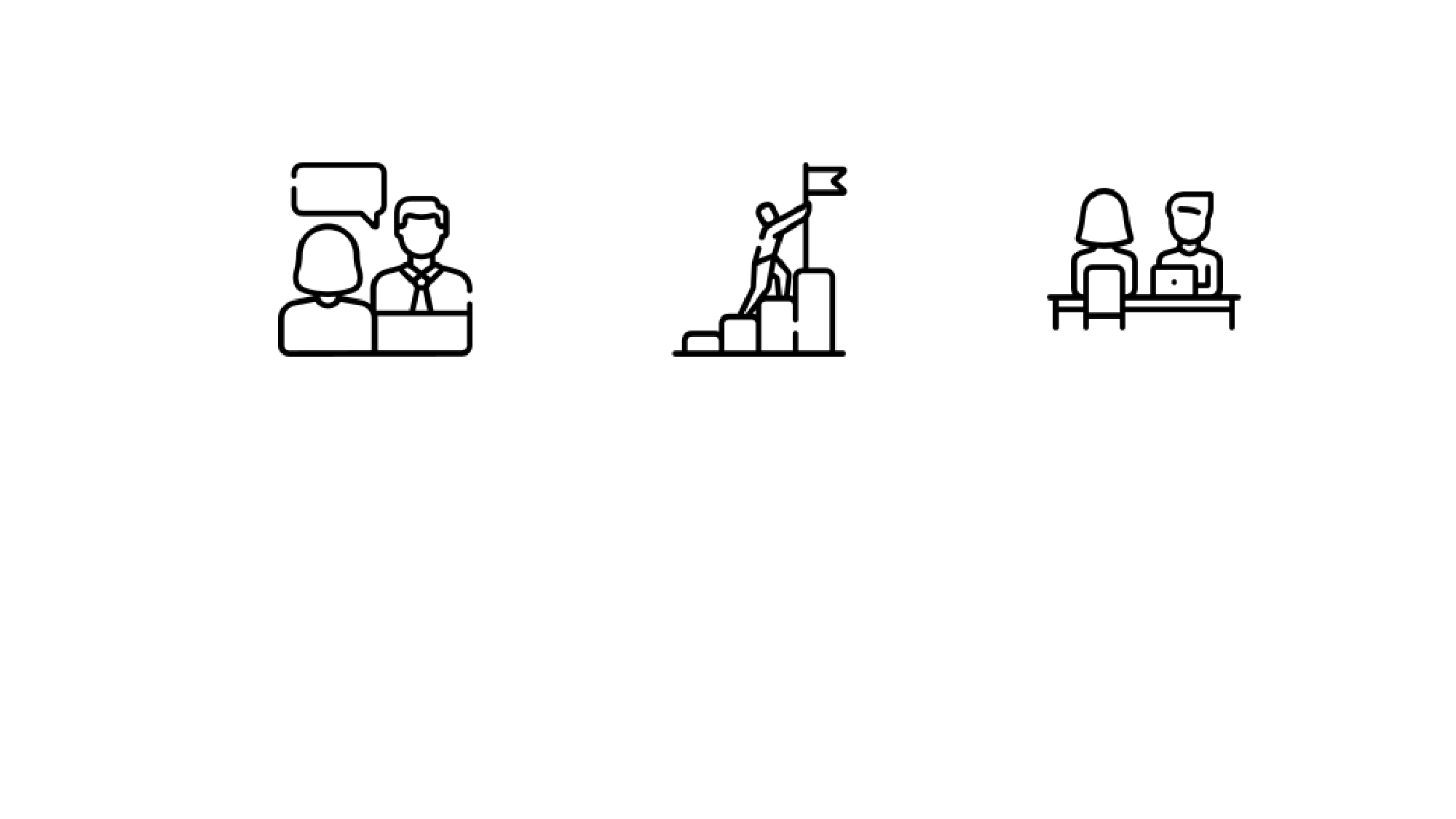
Introduction to Analytics
A primer on Analytics for the Recruiter
To begin with a recruiter needs to understand these distinguishing aspects
Opinion:
I feel that many applicants are not honouring the offers made
Data
Out of the 80 people to whom the offer has been made, 20 people have not honoured the offer
Metrics
The offer to joining ratio is 0.25 is way below the industry average of 0.5
Analytics
Most of the people who did not honour the commitment had a notice period of 90 days
Insights
To improve the offer to joining ratio, the organization decided to extend the offer to prospective applicants who have a notice period of 30 days.
Analytics and Analysis
Is there a difference between analytics and analysis?
Even though the words analytics and analysis are being used interchangeably, analytics is not the same as analysis.
In its basic definition, analysis refers to the process of separating a whole problem into its parts so that the parts can be critically examined at the granular level.
It is often used for complex systems where the investigation of the complete system is not feasible or practical, and therefore it needs to be simplified by decomposing it into its more descriptive/understandable components.
Once the improvements at the granular level are realised and the examination of the parts is completed, the whole system (either a conceptual or physical system) is then put back together using a process called synthesis.
Analytics, on the other hand, is the variety of methods, technologies, and associated tools for creating new knowledge/insight to solve complex problems.
In essence, analytics is a multifaceted and multi-disciplined approach to understanding and addressing complex situations. Analytics take advantage of data and mathematical models to make sense of the ever so complicated world that we are living in.
Even though analytics includes the act of analysis at different stages of the discovery process, it is not just analysis but also includes synthesis and subsequent implementation. More than anything else, it is a methodology that encompasses a multitude of methods and practices.
Why has Analytics become popular?
Analytics is the buzz-word in business circles nowadays. It is changing the way managerial decisions are being made. It has become a new label for data-driven decision-making. Analytics has been enabled by the evolution of technology, the ease with huge amounts of data can be crunched, the wonder world of Probability, Stastics and Mathematics.
Imagine a hiring organization with a large number of applicant resumes, recruiter’s interaction with them, a large number of employee records, an organizations experience with these employees. Now imagine the luxury of the organization’s ability to crunch this data and Mathematics ability to correlate the data and the real-time experiences. Now reimagine the business that can be done with those mind boggling insights that can be derived from Analytics in play.
An introduction to the four categories of Analytics
Descriptive Analysis: ‘What happened?’:
Descriptive analytics is the entry level in analytics taxonomy.
It is often called business reporting, because of the fact that most of the analytics activities at this level deal with creating report to summarise business activities, to answer the questions of “What happened?” or “What is happening?”.
Descriptive analytics is the interpretation of historical data to better understand changes that have occurred in a business. Descriptive analytics describes the use of a range of historic data to draw comparisons
Diagnostic Analysis: Why did it happen?
Diagnostic analytics, as a natural extension of descriptive analytics, examines the data to answer the question of “why did it happen?”. It employs exploratory data analysis of the existing data using tools and techniques like visualisation, drill-down, data discovery, and data mining in order to identify/discover the root causes of a given problem.
Predictive Analysis: What will happen?
Predictive analytics comes right after the descriptive analytics.
Organisation that are matured in descriptive analytics move into this level where they look beyond what happened and try to answer the question of “What will happen?”
The term predictive analytics refers to the use of statistics and modelling techniques to make predictions about future outcomes and performance. Predictive analytics looks at current and historical data patterns to determine if those patterns are likely to emerge again. This allows businesses and investors to adjust where they use their resources to take advantage of possible future events.
Prescriptive Analysis: What should I do?
Prescriptive analytics is the highest echelon in analytics hierarchy.
Prescriptive analytics is a type of data analytics—the use of technology to help businesses make better decisions through the analysis of raw data. Specifically, prescriptive analytics factors information about possible situations or scenarios, available resources, past performance, and current performance, and suggests a course of action or strategy. It can be used to make decisions on any time horizon, from immediate to long term.
Predictive Analytics and Prescriptive Analytics are the two categories that has an influence the Talent acquisition the most.
What is the difference between Predictive and Prescriptive Analytics?
Prescriptive as the name suggests prescribes solutions. Prescriptive analytics takes predictive analytics one step further by offering specific and actionable next steps for how to solve the issues brought up in the predictive data analysis. While predictive analytics can tell you what will happen, when it will happen and why, prescriptive analytics applies many layers of machine learning to suggest options for taking advantage of future opportunities or mitigating future risks and the potential outcomes of each decision option. Prescriptive analytics can optimize the processes and for a better future outcome.
Prescriptive analytics solutions make predictions and addresses questions related to “what to do” and why some action will take place. Prescriptive analytic output also arrives at results from different options to help support various decision paths.
Addressing the Recruiter’s Angst
Let us visit some of the perennial challenges of a recruiter/recruitment organization. Samples of help that predictive and prescriptive analytics can provide:
1. While working on a job description, how many times has the work been aborted? Imagine the luxury of being able to predict a genuine requirement.
2. While approaching an applicant, how many times have you been able to predict that the applicant will be a good cultural fit?
3. Would it be possible to predict the performance of an applicant?
4. Would it be able to predict how long an applicant is likely to stay with an organization upon joining?
5. The biggest pain point for the recruiter is when an applicant accepts an offer and is unlikely to join. With prescriptive analytics it is possible to ascertain the applicant’s joining probability and get a prescribed solution to fix the situation and save from potential embarrassment.
6. Would it be possible to identify the best possible applicants for open jobs?
It is understandable that an organization wants to hire the best possible human resources who will align with your existing workforce, be productive, and stay with you for a considerable time, in the optimal duration and cost.
The world of Analytics makes all these wishes realizable. It is important to note that to derive insights about acquitting talent we may have to dip into data after the applicant have become employees.
The Utopia and Dystopia of Data
Insights available about an employee with the help of Analytics, helps acquire Talent with greater ease. Hence the reference to Talent Management and People Analytics is consciously done in the text that follows.
Imagine a hiring organization with innumerable number of applicant resumes, recruiter’s interaction with them, innumerable number of employee records and an organizations experience with these employees.
Well the truth seems to be that a profusion of staggering data is staring at us or vice versa and we are all trying to make sense of it.
Data comes in many hues, may be good, clear, sensitive, hazy, structured, unstructured, fragmented, scattered, unutilized, lost, misused, abused, used with consent, without consent. Data could also be in multiple formats, document, audio or video.
Organizations are bound to adopt Analytics to remain competitive.
What would be the Organization challenges in harnessing Data for Talent Management?
The dystopian view is that there is a world, where everybody is being monitored, everything you do is kind of logged, the opportunity for more and more control of people in fairly negative ways, is an ongoing tension. The onus lies therefore with the organization to create a culture of transparency and trust to reassure the employees.
Organization must be ethical. Confidentiality of data is of paramount importance. They must demonstrate the sensitivity of the data and recognize what potential violation could be. Having very good data protection policies is a must. At this point of time, the employees are only reliant on the Organization’s intent as one is not really sure where the law stands on such matters.
A simple example of how organizations could earn the trust, is an example of badging in and badging out at the Security, to figure out how long people are spending in the building. When you collect data clearly for some other purpose, if it is going to be used to manage them, then that is when the questions of consent of usage of data crops up.
Just because an organization has power, it must not abuse it.
The onus is on the organization to create a data driven culture.
To enable a data driven culture traditional Human Resources function needs to be reengineered to be able to cater to the organization needs.
To build an effective People Analytic Function, you need
1. HR Professionals
2. Statisticians
3. Software Developers
The Culture must encourage systematic collection of Big and clean data. It should also be clear why that has been collected. When analysis is run on such data there are no surprises.
A Data Driven culture should promote data driven decisions.
Good Clean Data can help you recognize patterns or correlations, helps you come up with mathematical models which can contribute to meaningful insights and predict with reasonable assurance, insights which can help nurture talent in many ways.
Good clean data allows you to experiment with infinite possibilities and can truly transport you to Utopia.
References
Journal of Business Analytics, Volume 1, 2018, Issue – 1, Dursun Delen & Sudha Ram,Research challenges and opportunities in business analytics https://www.tandfonline.com/doi/full/10.1080/2573234X.2018.1507324
Investopedia
https://www.proponent.com/predictive-analytics-vs-prescriptive-analytics/
Mathew Bidell” People Analytics Course Era; The Utopia and Dystopia of Data is presented in an ASIS Form
Related Posts
Campus Recruitment
How well this mistaken ideas off denouncing pleasure & praisings will give you complete.
BIAS
How well this mistaken ideas off denouncing pleasure & praisings will give you complete.
Time to Reinvent
How well this mistaken ideas off denouncing pleasure & praisings will give you complete.
Diversity Recruitment
How well this mistaken ideas off denouncing pleasure & praisings will give you complete.












